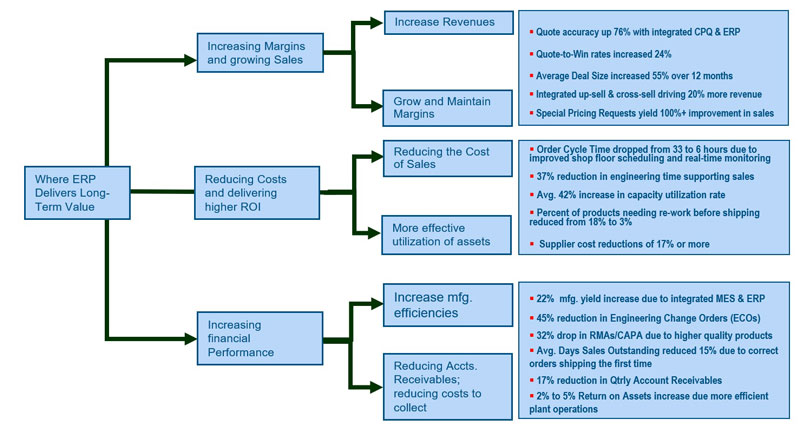by Louis Columbus, principal, DELMIAworks
In the wake of the pandemic, plastics manufacturers have innovated new ways to improve production run efficiency while keeping costs under control, relying on fewer on-site workers and protecting margins. In 2021, they’ll build on those strengths by pursuing four key initiatives:
- Further improve time efficiencies across the shop floor by strengthening and fine-tuning real-time process and product monitoring.
- Extend long-term planning horizons to 18 months.
- Simultaneously rely on faster, more frequent insights into the business to keep pace with rapid changes.
- Rethink the set-up of their factory floors to protect workers’ health while maximizing efficiency.
Let’s look closer at each of these four key initiatives and how they will help to reshape plastics manufacturers’ strategies and operations in the next year.
 Improve Time Efficiencies via Real-Time Monitoring
Improve Time Efficiencies via Real-Time Monitoring
Unlocking new insights into saving time on the shop floor is the highest priority plastics manufacturers will have in 2021. However, the information they need is hidden in the massive amount of data their machinery and plant production processes produce every day. For this reason, having a real-time production monitoring system in place, supported with process monitoring data to the machine level, is the first step to improving production efficiency.
Production data typically includes production cycle times, percentage of orders delivered on time, percentage completion times of jobs, scrap as a percentage of total production, validation that every production step is executed, cycle times by machine and overall equipment effectiveness (OEE), among others. Combining these production metrics with process data – such as temperatures, pressures, weights and measures, and event durations of each machine – helps to find how individual machines can be made more efficient, contributing to more saved time.
Additionally, the need to understand how much time efficiencies are worth will drive more integration across production reporting, accounting and financial management systems. Getting in control of production labor hours, standard labor and material cost variances, and margins is possible when there’s a real-time link between accounting and production.
Gaining time efficiencies starts on the shop floor by ensuring everyone associated with a given production run has the same visibility into scheduling, work center, team assignments and the delivery date. This requires the real-time monitoring data that serves as the pulse of the production floor to be integrated not just with accounting and finance systems but also the manufacturing execution system (MES) and quality management software. By giving everyone immediate access, plastics manufacturers can gain time efficiencies that translate into cost savings while delivering orders on time and within customers’ specifications.
Knowing what their time is worth will further motivate plastics manufacturers to delve deeper into their data with advanced statistical analytics and Six Sigma techniques. The most successful companies in 2020 already are paying for smart manufacturing certifications, including statistical process control (SPC) training, and they are investing in the professional development of their engineering teams to have more Six Sigma Black Belts on staff. These strategies are enabling them to turn data into a differentiator with both prospects and customers.
 Extend Long-Term Planning to 18 Months and Beyond
Extend Long-Term Planning to 18 Months and Beyond
The need for longer-range business continuity plans – beyond the six- and 12-month time horizons many plastics manufacturers relied on in the past – crystallized this year. The most successful plastics manufacturers in 2020 had intentionally diversified their portfolios, so they could adjust their production based on spikes or reductions in demand across different sectors. Some also had plans in place for addressing disruptions in their supply chains. Others had the insights in place to swiftly convert warehousing to production facilities in response to unprecedented volumes of demand from the medical sector.
At the same time, plastics manufacturers are seeking to make the temporary time efficiency gains they have achieved permanent, and the first step is ingraining lessons learned into an 18-month planning cycle. That means taking a data-driven approach to the business and understanding how trade-offs made daily on the shop floor impact long-term financial metrics, including accounts receivable, days sales outstanding (especially on custom orders) and other costs to collect.
Every plastics manufacturer’s business is slightly different, so each roadmap to revenue will have different metrics values. However, for long-term planning to succeed and be measurable on a revenue roadmap, six steps need to be accomplished:
- Improve the accuracy and availability of data to predict the short better- and intermediate-range implications of production decisions today by combining real-time production and process monitoring with financial data.
- Using Six Sigma, look for ways to reduce data latency across all systems, starting by not allowing molding machines to be islands, if at all possible.
- Begin constructing a roadmap to revenue (shown below) that can anticipate and predict how long-term product decisions impact financial performance.
- Translate production efficiency gains into financial contributions by quantifying cost-per-labor-hour savings, reductions in waste or scrap, and improvements in machinery utilization rates.
- Build financial models that track how improving schedule accuracy and modifying in-plant workflows based on higher quality data lead to greater cost gains and margin improvement.
- Reduce the cost of bad product quality and increasing traceability for more real-time regulatory compliance and better inventory control, all leading to cost reductions.
 Use Faster, More Frequent Insights to Keep Pace with Rapid Changes
Use Faster, More Frequent Insights to Keep Pace with Rapid Changes
Fast and frequent insights can mean the difference between catching a quality problem before a product leaves the plant, troubleshooting an errant machine generating high levels of scrap and making a tight delivery date a customer is waiting on. In 2020, “rapid” took on new meaning, as many plastics manufacturers tightened their reporting from weeks to days and from days to hours. Now, companies are looking to make the agility provided by these timelier updates a regular part of their business in 2021 and beyond.
 Rethink the Factory Floor for Safety and Efficiency
Rethink the Factory Floor for Safety and Efficiency
Despite the promise of a coronavirus vaccine, plastics manufacturers will need to continue restructuring their shop floors to protect employees while maximizing production capacity for at least the next year. At the same time, some changes to facilities in response to the pandemic are leading companies to rethink the long-term set-up of their facilities.
Some plastics manufacturers have taken a cue from biotech companies and are implementing color-coded shop floor zones. Team members wear a color-coded identifier for their work zone and remain within their zone for their entire shift, including breaks. This approach limits the risk of spreading COVID-19. Properly implemented, it also can improve workflow efficiency, minimize production errors and streamline onboarding – all helping to reduce costs over this time. For this reason, color-coded zones could become a long-term strategy at many manufacturing sites.
As plastics manufacturers have allowed many employees to work off-site, they also are beginning to consider whether every person needs to be on-site – or if facilities need to be staffed by certain workers at all. For example, some companies have begun to reevaluate whether they need a control center at each facility or whether multiple facilities can be managed and monitored from a single, central control center. Plastics manufacturers also will increasingly adopt a manage-by-exception approach, having a small team in place to ensure machinery is working properly and bringing in other workers as needed when issues arise.
Despite the more isolated way of working on the shop floor, the new structure will enable the role of subject matter experts (SMEs) to flourish. SMEs already were taking on greater ownership of new products and their unique compliance, quality and safety requirements. Now, in a post-COVID-19 world, ongoing training and certifications to deep-skill every position on the production line are a necessity, as the combined effects of social distancing and improved automation make human judgment and decision-making more valuable than ever.
Conclusion
The four priorities plastics manufacturers pursue in 2021 are predicated on taking a more data-centric view to managing their operations and looking for ways to accelerate their roadmaps to revenue. Improving time efficiencies will be far and away the highest priority, followed by relying on faster, more frequent insights into the business to keep pace with rapid changes. SMEs will play an increasingly central role in data-driven decisions. And, once a data-driven culture is in place and manufacturers are progressing on their roadmap to revenue, long-term planning that looks 18-plus months ahead will be well positioned to ensure business continuity and grow their business.
Louis Columbus currently is serving as principal of DELMIAworks. Previous positions include product management at Ingram Cloud, product marketing at iBASEt, Plex Systems, senior analyst at AMR Research (now Gartner), marketing and business development at Cincom Systems, Ingram Micro, a SaaS start-up and at hardware companies. Columbus also is a member of the Enterprise Irregulars. Professional experience includes marketing, product management, sales and industry analyst roles in the enterprise software and IT industries. His academic background includes an MBA from Pepperdine University and completion of the Strategic Marketing Management and Digital Marketing Programs at the Stanford University Graduate School of Business. Columbus teaches MBA courses in international business, global competitive strategies, international market research and capstone courses in strategic planning and market research. He has taught at California State University, Fullerton: University of California, Irvine; Marymount University and Webster University. He can be reached on Twitter at @LouisColumbus.






